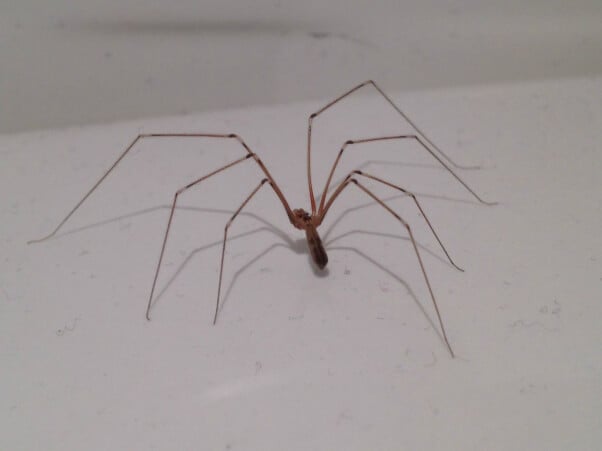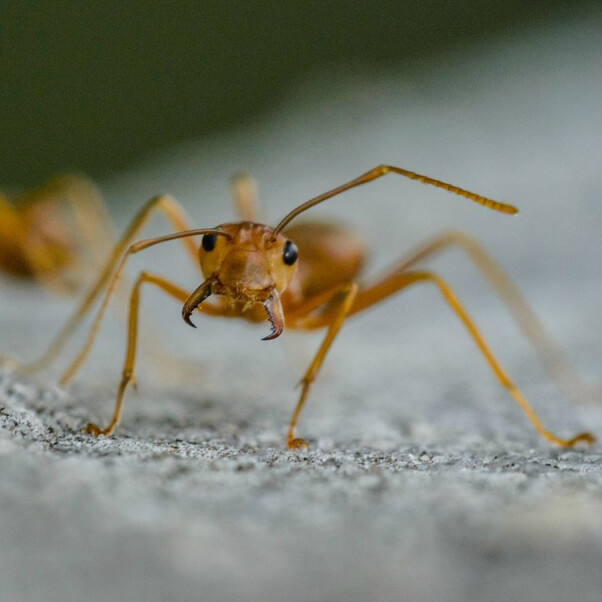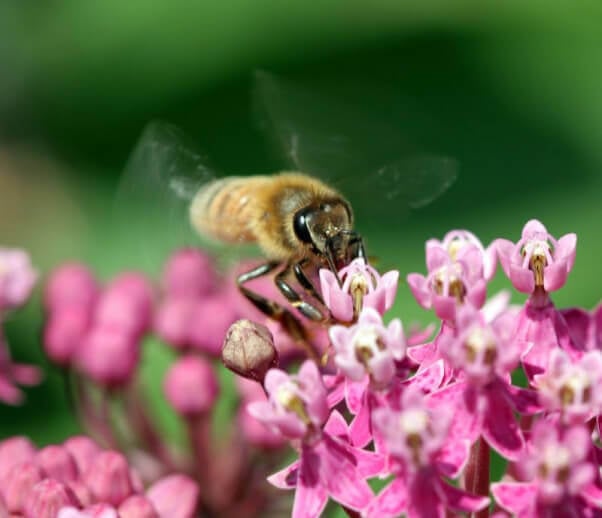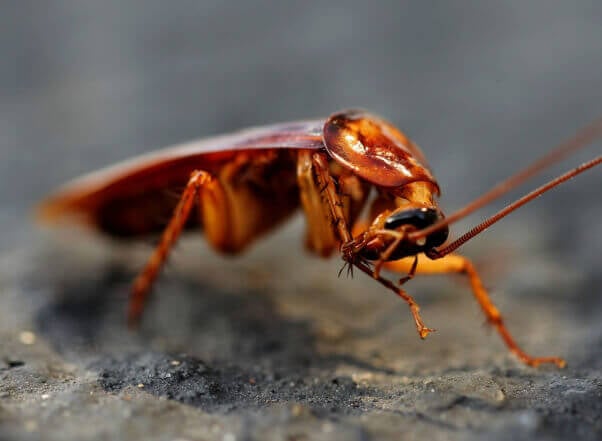Are you so kind that you wouldn’t harm a fly (or a spider, cockroach, bee, wasp, or mosquito)? If bugs have wandered into your home, there are many humane ways to remove them—there’s no need to use cruel and toxic insecticides or traps. Just follow these simple, humane steps to keep your home insect-free.
Humane Spider Control

Spiderwebs are a natural wonder. In a weight-to-strength comparison, a web is five times stronger than steel, and spiderwebs have inspired scientists and engineers for decades. Spiders are fascinating, so let’s put a positive spin on them instead of needlessly killing them.
Prevention
- Install screens on all windows to prevent spiders from entering.
- Make a repellent spray that you can apply to door and window frames, in corners, and in bathrooms by adding 10 to 15 drops of peppermint essential oil into a spray bottle with 8 to 12 ounces of water.
- Spiders also don’t like citrus, so you can rub a lemon peel on door and window frames to prevent them from making your house their home.
- Clear debris from around your house. Log piles, overgrown bushes, and other clutter can be havens for spiders.
- Seal up cracks in walls and ceilings.
How to Escort Spiders Outdoors
- If you don’t have a humane bug catcher handy, fashion one of your own by putting a cup over the spider. Then carefully slip a piece of paper under the cup. Keep the paper flat under the cup as you carry the spider outdoors.
- Use a humane bug catcher (available from PETACatalog.com) to catch spiders and release them outdoors unharmed.
Humane Ant Control

Ants have been running around on Earth for more than 100 million years, long before humans arrived on the scene. If you spot ants in your house, bear in mind that they were here first and don’t mean you any harm.
Prevention
- Keep the dirty dishes to a minimum. Some light housekeeping and organizing, such as keeping trash and dry foods in sealed containers and picking up pet food bowls between meals, can go a long way.
- Wash countertops and cabinets with a solution of equal parts water and vinegar, which ants abhor.
- There are also lots of natural repellents that you can place around your home to prevent ants from coming in:
- Put cinnamon sticks, coffee grounds, chili peppers, paprika, cloves, or dried peppermint leaves near any openings that ants can fit through.
- Squeeze the juice of a lemon at the place where they’re entering and leave the peel there.
- Planting mint around the foundation of your house may also keep ants away.
- Place cloves of garlic around indoor and outdoor ant pathways—unless you have a dog, or one can access this area, as garlic can be toxic to dogs.
- If ants are attracted to your animal companion’s food dish, place it in a shallow plate of water.
- The trail that ants leave should be thoroughly washed using a mixture of vinegar and water. You can add peppermint essential oil to the mixture to help repel the ants and make it smell better to humans.
- If a line of ants is marching into your home, follow them back to the point where they entered so that you can seal off any openings around doors, windows, or walls to keep them from re-entering.
Humane Fly, Bee, and Wasp Control

Like most animals, wasps and bees typically only “attack” when they feel threatened (e.g., when their nests are disturbed, humans swat at them, etc.). Bees and wasps may land on your skin to inspect a smell or get water, but they’ll leave if you stay calm and avoid quick movements.
Prevention
- Hang a sprig of cedar or eucalyptus over doors and windows to deter bees from entering your home.
- Lavender and basil act as fly repellents. Lavender flowers are as beautiful as they are useful, and basil can also be used in your pasta dinners.
- Wasps naturally avoid others’ nests, so you can simply fill a brown bag with crumpled paper, seal it, and hang it on your porch to communicate that your house isn’t their territory.
- Bees and wasps dislike the smell of garlic, so you can deter them by hanging some bulbs near your entryway.
How to Escort Flies and Bees Outdoors
- At dawn, if you turn off any indoor lighting and open your doors and windows, the insects will naturally fly toward the light (and out of your abode).
- Simply “herd” flies—they’ll naturally fly away from you, so just keep guiding them toward an open door. Once you start doing this, you’ll see how effective and simple it is—no humane bug catcher required!
- If a bee is trapped inside your house, try placing fresh flowers right outside an open window. The flowers should attract the bee, and as soon as the insect flies outside, simply shut the window.
Humane Cockroach Control

Like ants, cockroaches have been around for a long time—approximately 400 million years. Fun fact: Cockroaches can hold their breath for up to 40 minutes and can run about 59 inches per second—proportionally, that’s three times as fast as a cheetah. They’re remarkable survivors, and they aren’t going anywhere—killing them simply creates a void that others will soon fill. To keep cockroaches out of your home, the best defense is a good offense.
Prevention
- Keep food in tightly sealed containers, never leave dishes unwashed, and wipe your counters thoroughly.
- Always clean animal companions’ dishes, too, and don’t leave their food out overnight
- Water is a precious resource for roaches, so even a few drops in your kitchen sink—which would be the equivalent of a couple of glasses to you and me—will attract them. Keep typically moist areas, such as your kitchen sink and dish rack, dry.
- Always recycle all paper bags, boxes, and newspapers, or don’t bring them inside your home at all.
- Sweep floors and vacuum frequently.
- Seal up any cracks in walls, window trim, and baseboards
- Keep plugs on drains when sinks and bathtubs aren’t in use.
- Frequently clean microwaves, toaster-oven trays, and the area beneath refrigerators and stoves.
- Place crushed bay leaves, cucumbers, garlic, and catnip—which are natural cockroach repellents—in high places around your home.
How to Escort Cockroaches Outdoors
You can make your own humane live traps by taping newspaper around the outside of a glass jar, smearing a little bit of Vaseline along the inside of the lip of the jar, and placing food—such as fruits, bread, or vegetables—inside. The cockroaches who climb into the jar will be unable to climb back out through the Vaseline, and you can release them.
Harmony
Most importantly, remember to coexist with insects. Humans and bugs can live harmoniously. Most bugs are harmless, and some are even beneficial. That spider in the corner is likely eating another bug that was inside your home. And that bee is the reason your flowerbed is beautiful and blooming. We’re all a part of nature, and seeing insects near or in our homes is a reminder that we’re all connected.
Text VEG to 73822 to get the latest vegan lifestyle tips, recipes, and urgent action alerts texted right to your phone.
Terms for automated texts/calls from PETA: https://peta.vg/txt. Text STOP to end, HELP for more info. Msg/data rates may apply. U.S. only.







